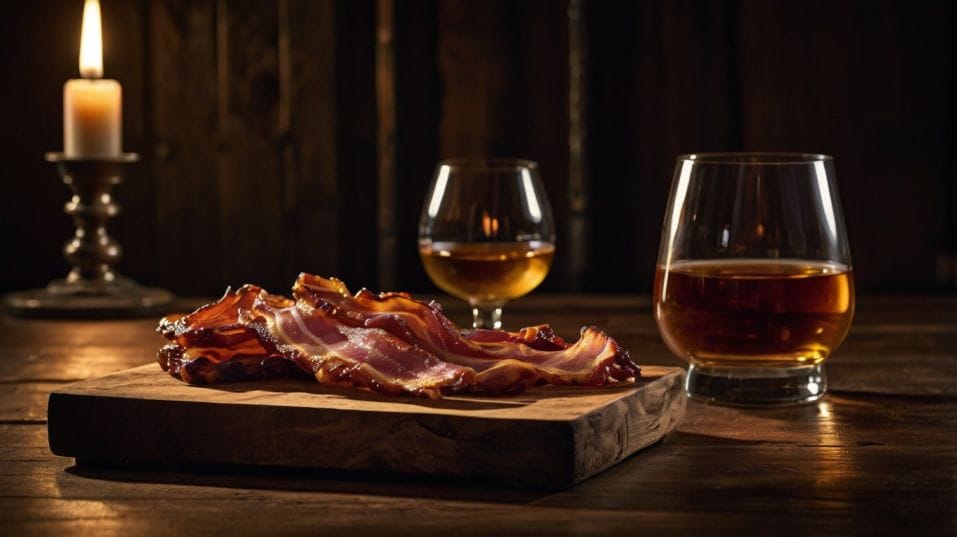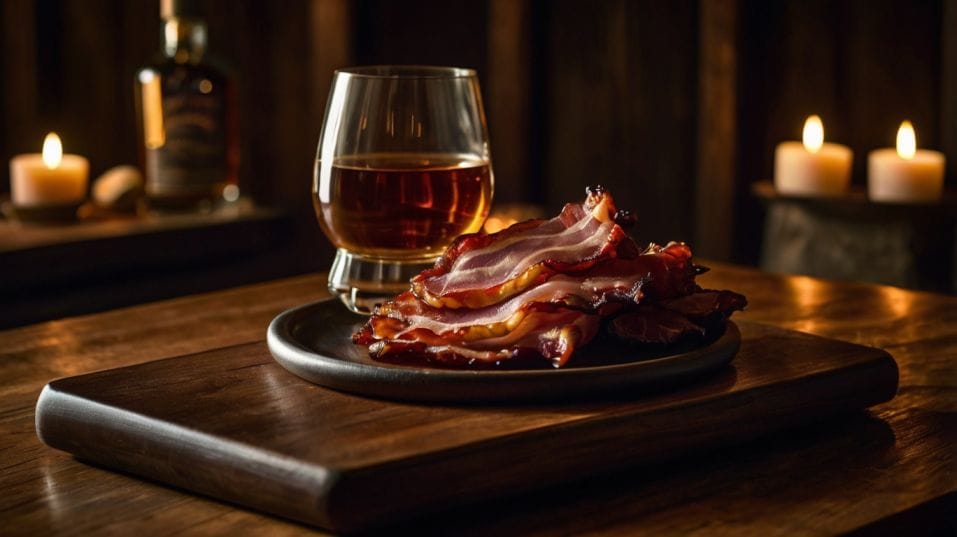Whiskey and Bacon: A Smoky Duo Worth Trying
Discover how pairing bacon with whiskey sharpens your palate, builds flavor memory, and helps you collect with clarity and confidence.

What if bacon could make you a better whiskey drinker? This isn’t about gimmicks—it’s about training your palate with something bold, familiar, and surprisingly effective.
Pairing whiskey with bacon sharpens your senses, helping you recognize depth, balance, and character in every sip.
Whether you're new to whiskey or just starting to take it seriously, this smoky duo turns casual tasting into real-world education. Ready to taste with intention?
Smoke Is a Language. Learn to Speak It.
Whiskey and bacon both speak smoke fluently, but with different accents. In whiskey, smoke can come from peat, charred oak barrels, or the distillation process itself.
In bacon, it comes from slow exposure to wood smoke—usually hickory, applewood, or maple. That’s where the pairing begins: shared DNA, different expressions.
But smoke isn’t just one thing. It ranges from campfire to charcoal to earthy and medicinal.
Tasting bacon and whiskey side-by-side teaches you to identify which kind of smoke you’re picking up in a pour—and whether it’s adding structure or just noise.
Start with a solid baseline. Choose a proper bacon: thick-cut, naturally smoked, no sugar glaze. You want honest fat, real salt, and clean smoke.

Then pair it with a whiskey that has backbone—nothing flabby or overly sweet. Think high-rye bourbon, bold American single malts, or a lightly peated Scotch. Avoid anything too soft or too shy. This is a test of presence and contrast.
Taste the bacon first. Let it coat your mouth. Then sip the whiskey. You’ll feel the fat smooth out the burn, round the edges.
The salt will elevate notes you didn’t notice before—orange peel, pipe tobacco, even dark chocolate. Now reverse the order. Sip, then bite. That first crunch will tell you something new.
What you're doing is isolating flavor dimensions: fat, salt, sweet, bitter, heat. That’s the foundation of real palate training.
Build a Flavor Memory That Actually Works
Every serious whiskey drinker has a flavor memory. The better yours gets, the faster you’ll identify bottle quality, aging profiles, and cask influence.
Bacon helps build that memory in a way that's visceral and stickier than just swirling a glass and guessing at notes.
Why bacon works
Fat carries flavor. Salt heightens it. Texture forces contrast. That combination teaches you to pay attention. You’re not just drinking. You’re mapping sensations. Bacon sets a standard—if a whiskey disappears next to it, it’s too thin.
If it turns metallic or bitter, it’s unbalanced. But if it opens up, holds its own, or even deepens in flavor, it’s a keeper.
This isn’t just theory. Collectors and tasters who train with food—especially bold food—develop faster sensory precision. You’ll start to recognize what “oak-forward” feels like.
You’ll detect astringency, waxiness, and mouthfeel, not just taste. And when you blind taste, your recall will be sharper, because you’re connecting flavor to real-world textures—not just abstract notes like “stone fruit” or “caramel.”
Use bacon like a reference point. A smoky control variable. It becomes a kind of flavor compass that you can return to whenever you're calibrating your palate.
Collect Whiskey Like It Matters
Great bottles don’t just taste good—they behave well in different situations. Food pairings, long pours, casual nights, focused tastings. If your collection is full of bottles that only perform under perfect conditions, you’re curating a fragile lineup.
Bacon as a bottle test
Test your bottles with bacon. Seriously. It’s a quick way to separate fleeting hype from real structure. Can the whiskey cut through fat without disappearing?
Does the flavor deepen or flatten? Does the finish linger, or does it get choked by salt and smoke?
When a whiskey can hold its own next to bacon, that tells you something about its core. It means structure. It means integrity.
That’s the kind of bottle you want to keep around—whether you’re collecting for flavor, aging potential, or just damn good pours.
Bacon also reveals whether your palate is being seduced by story or substance. Some limited releases fall apart under this kind of test.
Others—quiet, overlooked bottles—suddenly shine. That’s the point. You’re not chasing rarity. You’re collecting resilience.
Master the Basics: Technique Over Trends
This pairing doesn’t require a menu. It requires focus.
Set the stage right
Start with room-temperature whiskey. No ice, no chilling. Cold dulls both aroma and flavor. Warm bacon—ideally pan-cooked or oven-finished—is non-negotiable.
Microwave bacon isn’t bacon. And keep the portions small. You’re not here to fill up. You’re here to pay attention.
Use a clean glass, ideally a Glencairn or a copita-style tasting glass. No tumblers. You want the whiskey to concentrate. Take your time between bites and sips.
Let flavors settle. Breathe through your nose as you swallow. Take notes—not just on taste, but on feel. Where does the whiskey hit? What does the finish do after fat? These little details build muscle memory.
And if you're tasting with friends? Talk about what you're sensing, but don’t turn it into a guessing game. Use the bacon as a tool, not a distraction. You’re not pairing to impress. You’re pairing to learn.
Final Thoughts
Whiskey and bacon don’t just taste good together—they teach you how to taste better, period. This pairing helps you spot balance, recognize structure, and build a flavor memory that sticks.
It’s a low-cost, high-impact way to train your palate without getting caught up in marketing or mystique.
So get a bottle that speaks with confidence. Pick real bacon that’s smoked like it matters. Taste slowly, think clearly, and don’t over-explain it.
You’re not chasing trends. You’re building skill. Try it tonight. Taste for real. And start building a palate you trust.




